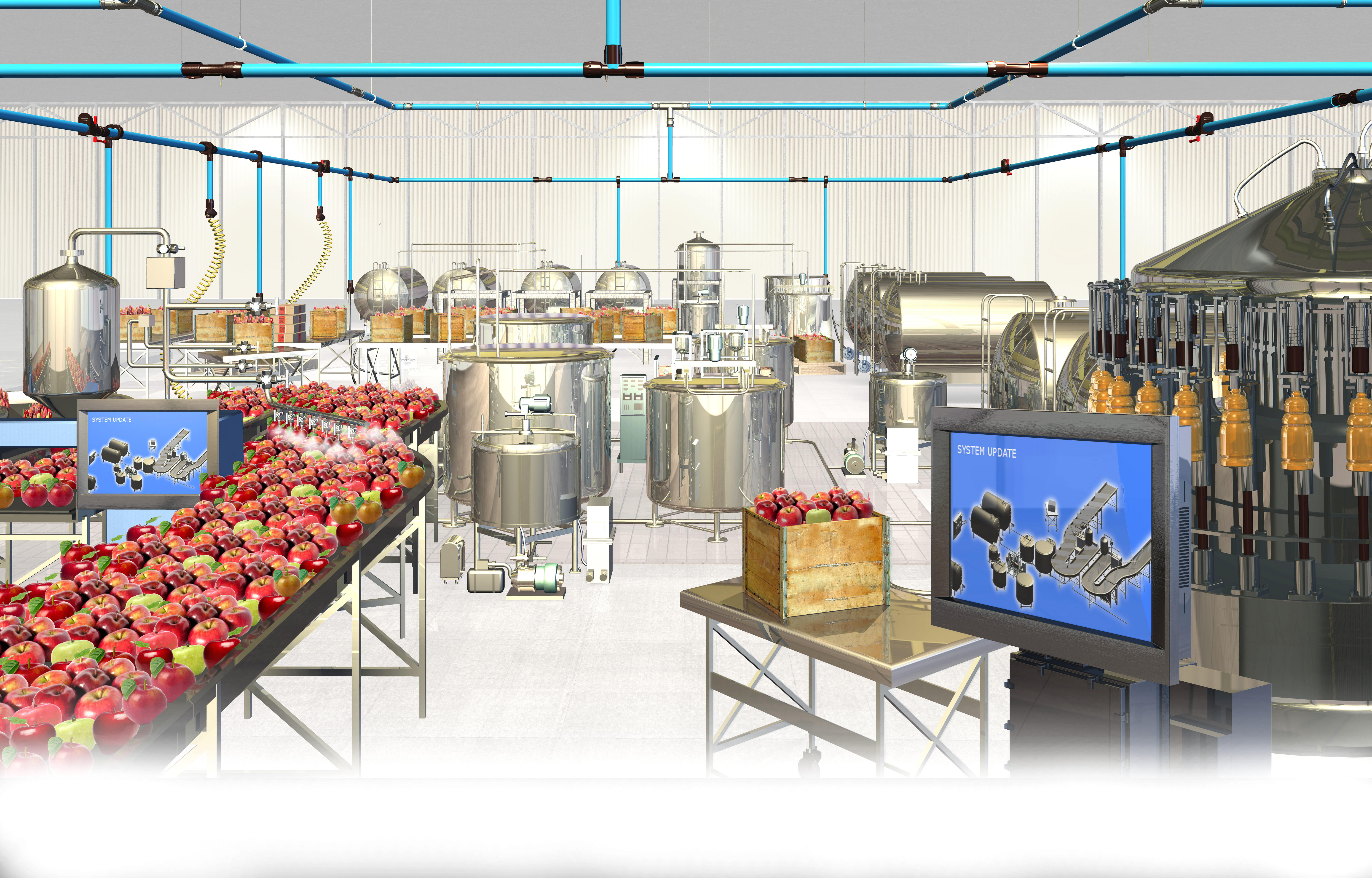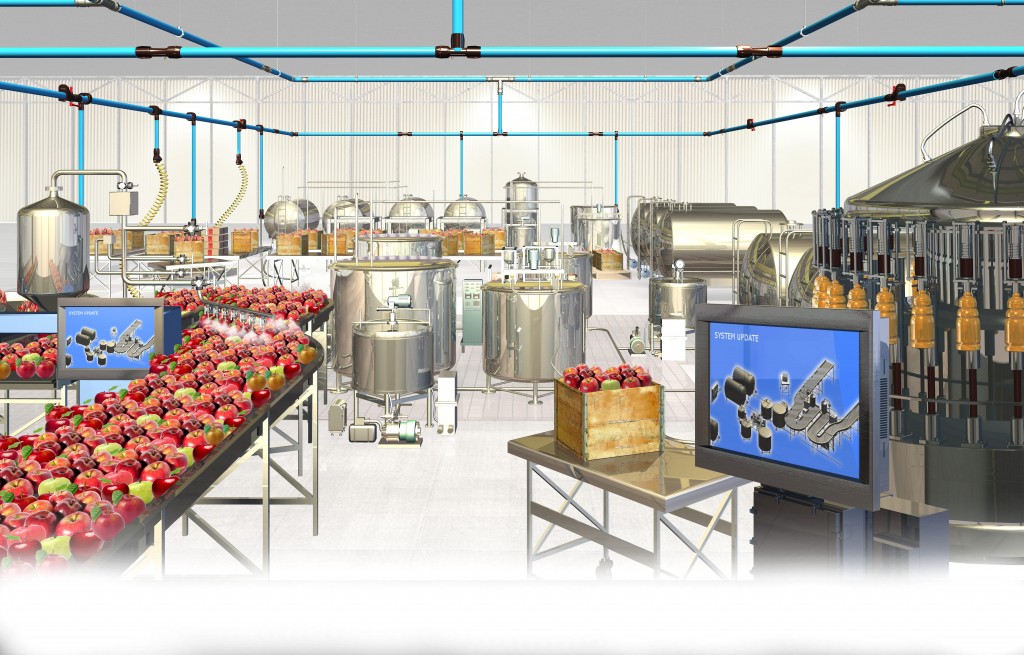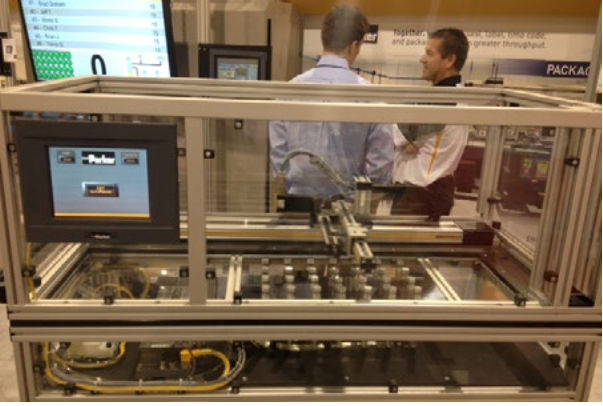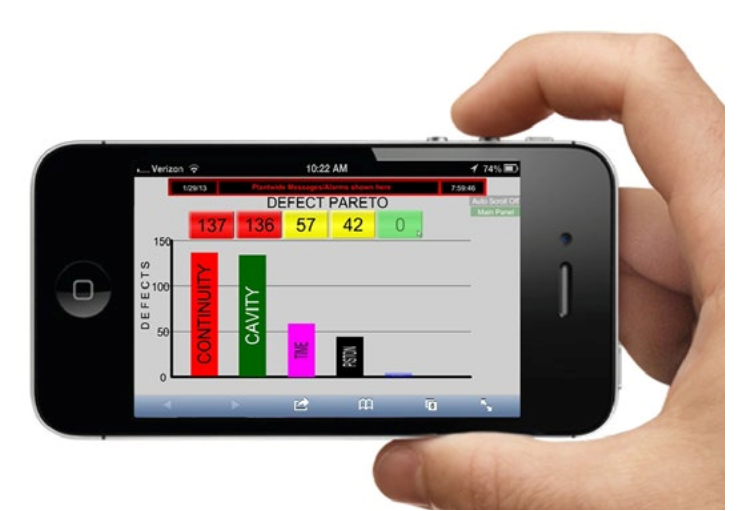
How to access information anywhere on the plant floor
Industries such as food processing can leverage intelligent technologies to push valuable production and machinery information wherever it is needed for fast response.
May 22, 2015 | By Andy Balderson


To help speed their ROI, modern plants need efficient machines, a high throughput and the capability to ensure they are running efficiently and effectively. A good way to help support this endeavour is through the use of Parker’s ‘Information Anywhere’ technology, where human machine interfaces (HMIs) and large format, plant floor Andon displays can take plant floor data and deliver it as information in real time across standard web architectures.
This approach is intended to help facilities be more flexible and efficient. For instance, say a critical control skews out of range in a food processing plant. In the past, a machine operator had to ask a supervisor to start a resolution process. Now, because the HMIs show real-time inputs, operators have the information available allowing them to make decisions on their own in just a few minutes to resolve any issues. Additionally, because much of the data display is graphical and can show information such as trends of data tending to move out of range, supervisors can take action quickly to avoid a production machine going down or resolve maintenance issues early-on.
This ability has critical consequences for manufacturers. For instance, a gradual pressure drop that may otherwise go unnoticed could be automatically detected and a process triggered to alert the appropriate operator and/or technician that oil is leaking in proximity to a food process.
As another example, the pH (acidity) of a raw material solution could be constantly monitored to ensure quality, and if the pH trends out of range, action can be taken before it goes outside of the control limits and renders product unusable. Such critical information and alerts can be displayed locally at the process, plant-wide via plant displays, remotely, or can even alert the proper contact via e-mail or a text message.
One food manufacturer in particular happens to have several plants and uses its HMI in front of process controllers to push information from multiple plant locations to areas where the data needs to go. The HMIs on the plant floor are also used to display useful information for operators, such as drawings and manuals.
In addition, the company just took the step of integrating tablets over a wireless network into the system, which lets supervisors see data while they are on the move. For instance, supervisors can see screens based on user name, while a database captures all logins to keep track of who made changes.
How does the technology work?
The devices are web-enabled, meaning you can just plug an Ethernet cable into the HMI or large-format display and it will set itself up as a web page. Then, when you have the HMI running, for example, you can enter the IP address into your computer or tablet at home, in your office, or anywhere in the world and the display will appear on your screen, letting you remotely monitor what is going on with the machine.
 Essentially, Information Anywhere is a set of products that give plant personnel information via a local cloud that resides in the company network. The technology makes available any tag on the programmable logic controller (PLC) or the programmable automation controller (PAC) out to the HMI or the Parker Factory Display (PFD).
Essentially, Information Anywhere is a set of products that give plant personnel information via a local cloud that resides in the company network. The technology makes available any tag on the programmable logic controller (PLC) or the programmable automation controller (PAC) out to the HMI or the Parker Factory Display (PFD).
Specifically, current Information Anywhere devices include the Interact Xpress HMI and the PFD and will shortly include the next-generation Xpress controllers. Supporting the concept of Information Anywhere are InteractX, a Supervisory Control and Data Acquisition (SCADA) package, and Remote Manager, an app which lets users monitor and control their PFD or Xpress system from a tablet, smartphone, laptop or computer.
The Parker Factory Display lets managers at a contract packager for dry foods view production metrics to better optimize the operation.
In another example, a Canadian food processor uses a PFD to see its production levels in real time, which, in turn, lets the company adjust processes quickly and on-the-fly. The PFD helps the company securely get key performance indicators that it wants to monitor and publish on the company network. The key information is often consumed remotely by plant managers and might include Overall Equipment Effectiveness (OEE), target volumes and other metrics. The device also shows performance metrics on the plant floor, helping production line efficiencies skyrocket because the display of information inspires both cooperation and friendly competition among workers.
Parker’s Remote Manager app lets personnel such as plant managers monitor and control their Parker Factory Display or Xpress HMI from anywhere using their mobile phone, tablet or laptop.
Security in a Distributed Environment
No doubt, a distributed environment can introduce risks to a network if unprotected. The environment is considered ‘distributed’ because an HMI is making the primary connection to the PLC, while another machine has the SCADA (supervisory control and data acquisition) application, which is getting its data forwarded by the machine-level HMI. In addition, there is a database residing on a server, which is itself located on yet another piece of hardware.

Parker’s Remote Manager app.
How does the system ensure the accuracy of the data being moved around? InteractX 4.0 connects directly to Xpress screens and data, allowing machine-level application elements to be used at the supervisory level. A proprietary communication protocol, which performs a redundancy check on the data between the devices, ensures accuracy. A function called ‘cache and forward buffering’ operates between the SCADA-level device and its database. The database can either be connected on the same box as the SCADA device or it can be located on a dedicated database server somewhere else in the organization.
Typically, when the database is located externally, there is a risk of network issues or physical issues that can prevent data from being logged into the database. The cache and forward buffering feature keeps a local copy of the data on the SCADA-level device. When, for example, an Ethernet cable gets disconnected, making the back-end database unavailable, the feature begins to cache the data that is being requested to be logged in on a local file on the SCADA hardware. After a user reconnects to the database server, it causes forward buffering to flush the cache back out to the database. This provides an accurate record-keeping capability. In a food processing environment, as an example, this might mean plants don’t have to explain to inspectors why they don’t have data for shipment number two.
Next-generation controllers
Parker’s new Xpress Programmable Automation Controller (PAC) lets food and beverage manufacturers be more efficient by automating lot and production tracking as well as the tracking of information, such as where a food product is in the process and the date of production. The PACs combine the capabilities of the HMI and the controller into a single, more powerful controlled platform. The PAC even lets plants use barcode scanners, QR code scanners or even RFID tags to capture production information such as where the food product is in the process and the name of the plant where it was produced.
In addition, for applications where the food product is cooked, the PAC lets users log the temperature cycle to show the cooking process reached an internal temperature of a required number of degrees for a certain number of hours. All of that information is captured at the controller level, and logged through a database, so from a food safety perspective as well as a control perspective, the information is easily retained and easily recalled using either the controller and the tools available in it or an accompanying HMI scanner system. What’s new in industry is the ease-of-use of those sorts of tools that make it simple to track, mark and recall information.
In fact, the new global PACs blur the line between HMI and controls because they include base-level HMI capabilities right in the controller. This means that the PAC can take the information from the plant floor and push it wherever it is needed, in one box.
What really separates a more traditional PLC and the PAC is that the PAC can integrate multiple technologies for more complex motion-centric machine control applications. For example, the PAC integrates the traditional machine control of a logic controller with the traditional multi-access coordinated motion control of a dedicated motion controller, all while having the capability to perform HMI tasks.
The PAC integrates tightly with existing plant-wide and process systems. A communication bus capability lets the device natively communicate with a dominant Rockwell or Siemens system. As a slave in the network, the PAC acts like a standard Rockwell or Siemens controller in a particular environment, and it therefore passes information more easily to the supervisory system and directly to web browsers. For Rockwell settings, the controller supports a function called ‘produce and consume’, which supports the passing of data between multiple controllers on the floor.
Into the future
The easiest way to think about the global strategy and family of products is that the links between the products have been designed so the devices are easier to use and integrate with each other. For example, the PAC makes a programmer’s job easier because it creates tags that automatically port to the HMI and SCADA levels, freeing developers from having to reinvent the wheel. Global PACs can also take motor parameters from encoders as well as from components such as Parker OSPE belt-driven linear actuators to better support keeping an eye on complex labelling and packaging applications.
A big advantage of the Information Anywhere architecture is that each device is intelligent and capable of communicating with the controls or other devices natively. This frees plants from having to make a big investment in a back-end server as they must with most client server architectures. A single HMI screen in front of an existing controller can publish its information to the web automatically, natively without any other server requirements, tools or special development.
Andy Balderson is the division marketing manager for the Parker Hannifin Corporation Automation Group. For more information, visit http://www.parkermotion.com/Xpress/.
